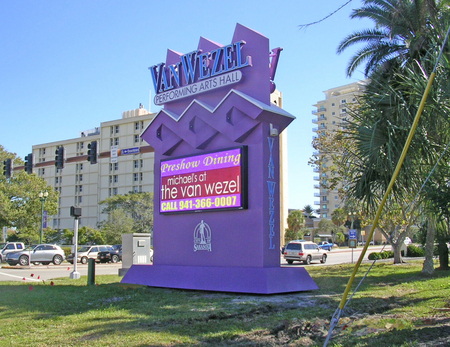In January, the City of Los Angeles Planning Dept. proposed a new sign ordinance that effectively eliminates the distinction between on- and off-premise signage, significantly reduces allowable square footages and bans digital signage, among other restrictions.
Almost simultaneously, Assemblyman Mike Feuer (D-Los Angeles) introduced a bill at the State Capitol that proposed a statewide, three-year moratorium on new digital billboards so the impact on driver safety can be further “studied” (AB-109).
Needless to say, regardless of your opinion of billboards, these proposals, which the California Sign Assn. (CSA) is vigorously challenging, pose a serious threat to the sign industry overall and the business community. CSA has established a Los Angeles Task Force and is devoting substantial resources to oppose this legislation.
The Los Angeles proposal unreasonably seeks to eliminate the longstanding, historical distinction between on-premise and off-premise signs (meaning, business-identification signage versus billboards). Instead, it establishes for all parcels a minimal, fixed, allowable square footage based on street frontage. It reduces allowances from 4:1 to 1:1, maximum pole heights to 20 ft. and monuments to 60 sq. ft. and 8 ft. in height, and bans digital, roof and wall signs higher than 35 ft. As a result, every parcel could conceivably display both on-premise and off-premise messages, provided the total allowable square footage isn’t exceeded.
The ban on electronic signage includes not only digital billboards, but all types of commonly accepted electronic message centers, such as time-and-temperature displays and pricing signs. Additionally, the proposed restrictions on height and size fail to account for legibility, conspicuity, setback and traffic speed, and apparently aren’t based on any currently available scientific or empirical traffic safety and wayfinding data.
Contrary to the undocumented claims of those who support a digital-technology ban, the studies and surveys (of which we know) clearly establish that digital signs are no more distracting than street signs. To our knowledge, and as previously reported recently in ST, digital signs haven’t caused traffic accidents, and no studies have shown the contrary.
Advertisement
Most of the “sign clutter” in Los Angeles stems from illegal signs that arise from the city’s own failure to enforce its ordinance. Some estimates say more than 10,000 illegal signs stand in Los Angeles; yet many legitimate sign companies have never erected a sign without a valid permit. The new proposed ordinance will undoubtedly only encourage more illegal sign activity.
City officials have failed to fairly examine the consequences of the proposed ordinance. While the proliferation of illegal signs is a problem, this ordinance would profoundly and adversely impact jobs and businesses. Instead, the city should consider regulations that address appropriate concerns without eliminating property rights.
If passed, small billboards and on-premise identification signage could be erected on every parcel in Los Angeles. The resulting signage proliferation would cause an enforcement nightmare – the exact problem the city is trying to resolve. Furthermore, the planning staff’s desire to eliminate digital signs dismisses the on-site needs of thousands of small businesses that now, and in the future, will benefit from their use.
Small businesses have shouldered more than their share to sustain our economy and keep people employed (without any bailout). Government shouldn’t restrict the ability of small businesses to bring in more customers. Should they pass, these flawed proposals would cause the loss of jobs and sales tax, as well as reduced property values and lost property tax (signs are usually deemed a taxable improvement to real property).
Businesses’ success or failure hinges on their ability to effectively advertise. The most cost-effective advertising, on-premise business signage, works around the clock, seven days a week, drawing in as much as 50% or more of a business’s new clients. It doesn’t make sense to strip a business of its basic right to adequately and meaningfully communicate with customers.
But that’s exactly what will happen if laws are passed that ban new digital signs, and slash the size and height of new commercial signs. To stop competing messages from proliferating, why not compel the removal of illegal and unpermitted signs, and other structures, and then take a fresh look at the cityscape.
Advertisement
Government and anti-sign groups should embrace and encourage the entrepreneurial spirit evidenced by retail signage. Instead of beating up on business and the consumer citizenry, the foundation of our economic well-being, both Los Angeles and the State of California should drop these ill-conceived measures.
Jeff Aran is legal counsel and director of government affairs for the California Sign Assn. CSA board member. Former ISA Chairman Teresa Young (Sign Biz) also contributed.



 Photo Gallery1 week ago
Photo Gallery1 week ago
 Ask Signs of the Times2 weeks ago
Ask Signs of the Times2 weeks ago
 Paula Fargo1 week ago
Paula Fargo1 week ago
 Real Deal4 days ago
Real Deal4 days ago
 Photo Gallery1 week ago
Photo Gallery1 week ago
 Women in Signs2 weeks ago
Women in Signs2 weeks ago
 Women in Signs1 week ago
Women in Signs1 week ago
 Signs of the Times1 week ago
Signs of the Times1 week ago










